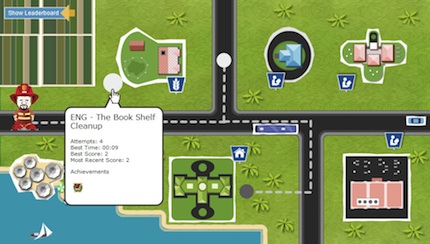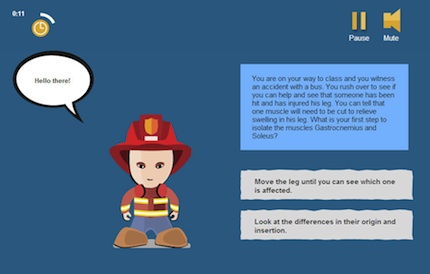Community College Uses Gaming To Bring Real-World Relevance to Courses
- By Dian Schaffhauser
- 04/14/14
Lambton College is developing a pilot program to test out gaming in six of its courses — including first-year math, electrical circuits, and hair removal — to see if the use of game-playing improves attendance rates and student engagement. Lambton College in Sarnia, Ontario, Canada, an hour north of Detroit, is working with developers at education technology company Desire2Learn to develop the games. The program is expected to be introduced to students in fall 2014.
The college has about 3,600 full-time students and 6,500 part-time students. It offers two-year and three-year diplomas, as well as certificates, advanced diplomas and applied degrees.
Lambton began pondering the use of gaming in its courses shortly after it began promoting the use of mobile technology by its faculty members and students. The college considers itself an "iPad preferred" institution, which means that it provides iPads to all of its instructors, including adjuncts, and encourages students to use iPads as well.
According to Rick Overeem, associate dean of the college's Learning Innovation Centre, "When we started becoming a mobile college and using devices to teach students, we noticed that as we were walking through the hallways at the college so many students were playing games. I said, 'There's got to be a creative way we can get into their world.'"
The challenge has been to persuade students to take seriously those courses for which they see little application in their chosen future careers. For example, candidates in the fire science technology program don't always understand why they need to take math classes, explained Overeem. "They can't make that relationship between taking math and applying it to their future careers as fire fighters. But there are so many calculations in fire. They don't understand that in the moment: 'Give me the firefighting skills, put me on a truck, and away I go!'" By using "gamification principles in a math course to make it interactive, to make it interesting and engaging the student," he noted, the school is hoping to help students see the applications of their required courses "outside there in the real world."


Prototype screens from a game developed by Lambton College and Desire2Learn |
The college, which uses Desire2Learn's learning management system (LMS), began working with the company to develop games for six of its courses: technical math, chemistry, general education, anatomy, electrical circuits and hair removal, a course from its esthetician program. The faculty provide subject matter expertise; Overeem's department provides instructional designers; and Desire2Learn is providing the mobile game developers.
Overeem said he anticipates that faculty will begin testing the new games in the May-June timeframe; they'll be introduced to students in September for the new school year.
The games will feature avatars and interactive or competitive components, such as scoreboards, that students can access from their mobile devices. Those will be accessible through the LMS. (The images shown with this article represent work in progress; at this point, nothing represented is certain to be in the final product.)
"Gamification is one of the trends changing how we approach education. Game-based learning has proven effective in helping students enhance problem solving and critical thinking," said Desire2Learn President and CEO John Baker. "This is a great example of why schools need an open learning platform that allows them to integrate the multitude of technologies, techniques, and new pedagogies that are emerging to help learners succeed in their education endeavors."
Overeem said he'll monitor program value in several ways. "I'm looking for student engagement — that could be anecdotal — but also looking for objective assessments. How are [students] doing on their assessments? How are [they] reacting to their classes? Are grades enhanced as a result of gaming? Are they engaged? Do they attend classes? What are our attendance rates like? We have some measures that are pretty objective. We can compare last year's electrical circuits class to this year's and have a look at attendance rates, at grades, at student success and student engagement. Really, it's all about our students."
About the Author
Dian Schaffhauser is a former senior contributing editor for 1105 Media's education publications THE Journal, Campus Technology and Spaces4Learning.